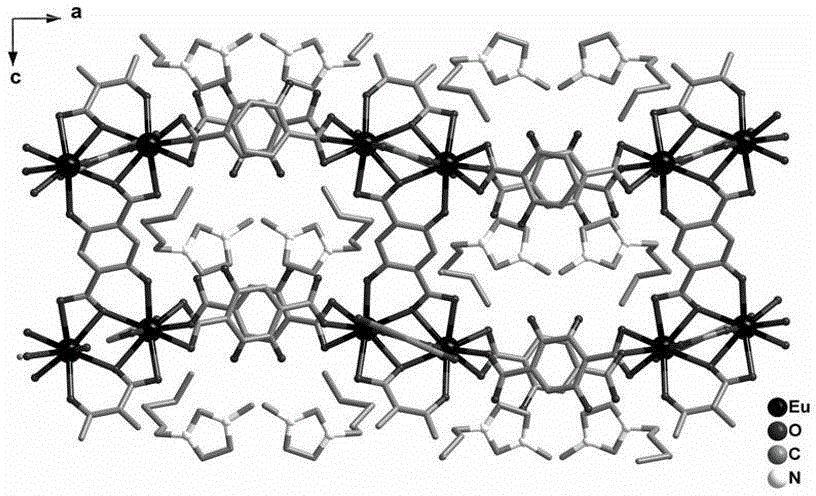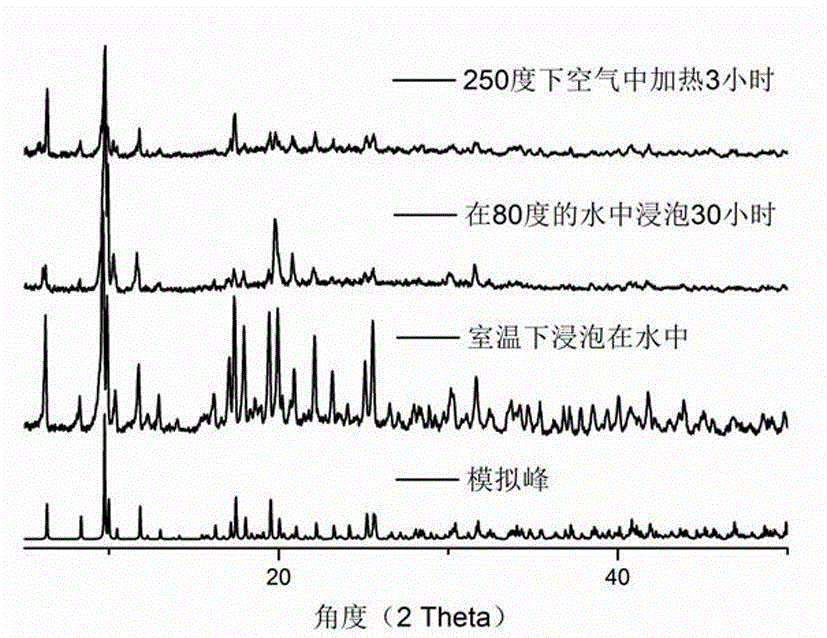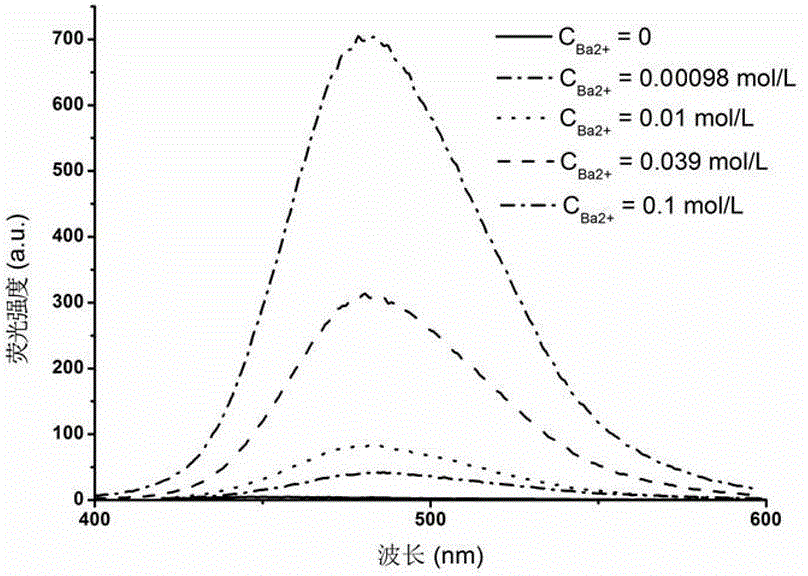Fluorescent probe material prepared from Ln-MOFs (rare earth metal-organic frameworks) and application of fluorescent probe material
An organic framework, rare earth metal technology, applied in the field of fluorescent probe materials, can solve problems such as no reports yet, and achieve the effects of easy storage, low energy consumption, and simple process
- Summary
- Abstract
- Description
- Claims
- Application Information
AI Technical Summary
Problems solved by technology
Method used
Image
Examples
Embodiment 1
[0039] Embodiment 1: the preparation of sample 1#
[0040] [Hmim]Cl, Eu(Ac) 3 ·6H 2 O and 2,5-dihydroxyterephthalic acid were mixed in a ratio of 3:1:2, heated to 160 degrees by microwave, taken out after 10 minutes, cooled and washed twice with absolute ethanol and water at room temperature, and dried Corresponding powder samples are available.
Embodiment 2
[0041] Embodiment 2: the preparation of sample 1#
[0042] [Hmim]Cl, Eu(Ac) 3 ·6H 2 O and 2,5-dihydroxyterephthalic acid are mixed according to the ratio of 10:1:2, put into the reaction kettle and heated to 160 degrees in the oven, take it out after 5 days, cool and use absolute ethanol and The corresponding powder sample can be obtained by washing with water three times and drying.
Embodiment 3
[0043] Embodiment 3: the preparation of sample 2#
[0044] [Hmim]Cl, Tb(Ac) 3 ·6H 2 O and 2,5-dihydroxyterephthalic acid are mixed according to the ratio of 1:1:2, put into the reaction kettle and heated to 160 degrees in the oven, take it out after 5 days, cool and use absolute ethanol and Wash twice with water and dry to obtain the corresponding powder sample.
[0045] Structural Characterization of Samples
[0046] The sample was characterized by X-ray single crystal diffraction, and the structure of the sample was analyzed by Shelx 2013. The results show that sample 1#~sample 2# all have the general formula shown in the chemical formula (1), and the following takes sample 1# as a typical representative to describe in detail.
[0047] Wherein, the crystal structure of sample 1# is obtained by x-ray single crystal diffraction, such as figure 1 shown. Sample 1# crystal belongs to Pbcn The space group, whose unit cell parameters are: a = 27.8885(7)?, b = 11.443...
PUM
 Login to View More
Login to View More Abstract
Description
Claims
Application Information
 Login to View More
Login to View More - R&D
- Intellectual Property
- Life Sciences
- Materials
- Tech Scout
- Unparalleled Data Quality
- Higher Quality Content
- 60% Fewer Hallucinations
Browse by: Latest US Patents, China's latest patents, Technical Efficacy Thesaurus, Application Domain, Technology Topic, Popular Technical Reports.
© 2025 PatSnap. All rights reserved.Legal|Privacy policy|Modern Slavery Act Transparency Statement|Sitemap|About US| Contact US: help@patsnap.com



